EVENT
Suggested Route|Trip to Encounter Rich and Colorful Geinoh – 3 Days and 2 Nights Sep.23rd(Fri Holiday)-25th(Sun)
- 2022
- suggested-route
- Experience
- Appreciation
Day 3
Sep.25th(Sun),2022
Learn, feel, and face the earthquake
| Itinerary | Remarks | |
|---|---|---|
| 09:11 | Depart Ofunato Sta. for Kisekino Ipponmatsu (Miracle Pine Tree) Sta.(09:51) | JR Ofunato Line BRT bound for Kesennuma |
| 10:00 | Iwate Tsunami Memorial Museum | The Miracle Pine Tree |
| | Lunch|Michinoeki Takatamatsubara | |
| 12:30 | Depart The Miracle Pine Tree Station for Ofunato Sta.(13:15) | JR Ofunato Line BRT bound for Sakari |
| 13:22 | Depart Ofunato Station for Morioka Sta.(16:31) | Iwate Prefecture Transportation Morioka Line |
| Hilight | Dinner|Morioka’s three typical noodle dishes | Around Morioka Station |
| 19:14 or 19:50 | Depart Morioka Station for Tokyo Sta.(21:23 or 22:04) | Tohoku Shinkansen ‘Hayabusa 44’or 46’ |
Ofunato Sta.

JR Ofunato Line BRT bound for Kesennuma
Dep.09:11
Arr. 09:51
Travel time| 40min
Kisekino Ipponmatsu (Miracle Pine Tree) Sta.
Iwate Tsunami Memorial Museum (Iwate TSUNAMI Memorial) / Michino Eki Takatamatsubara (Roadside Station Takatamatsubara)
This museum was created to educate people about the Great East Japan Earthquake and Tsunami for future generations.
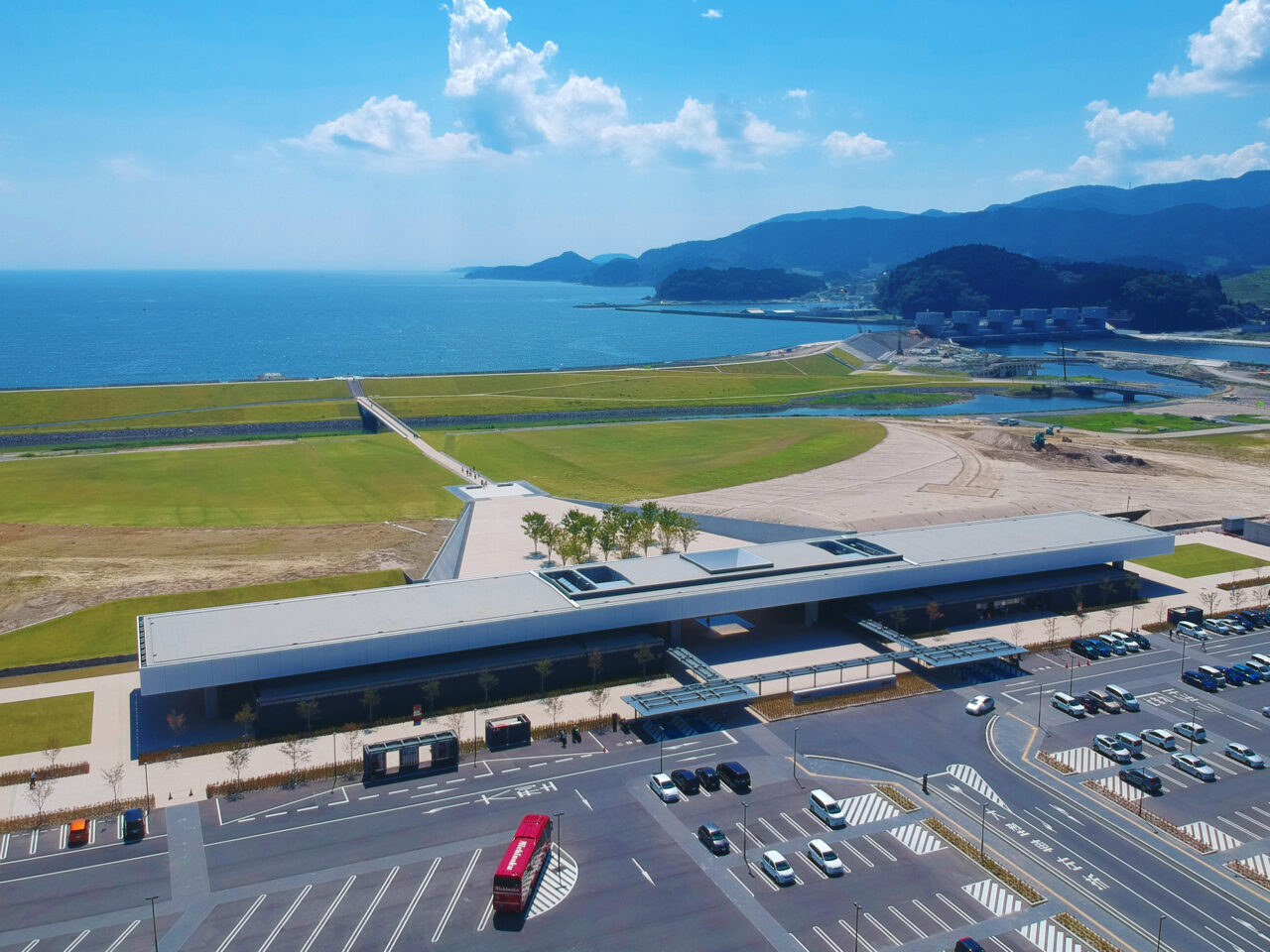
▲ Iwate Tsunami Memorial Museum (Iwate TSUNAMI Memorial)
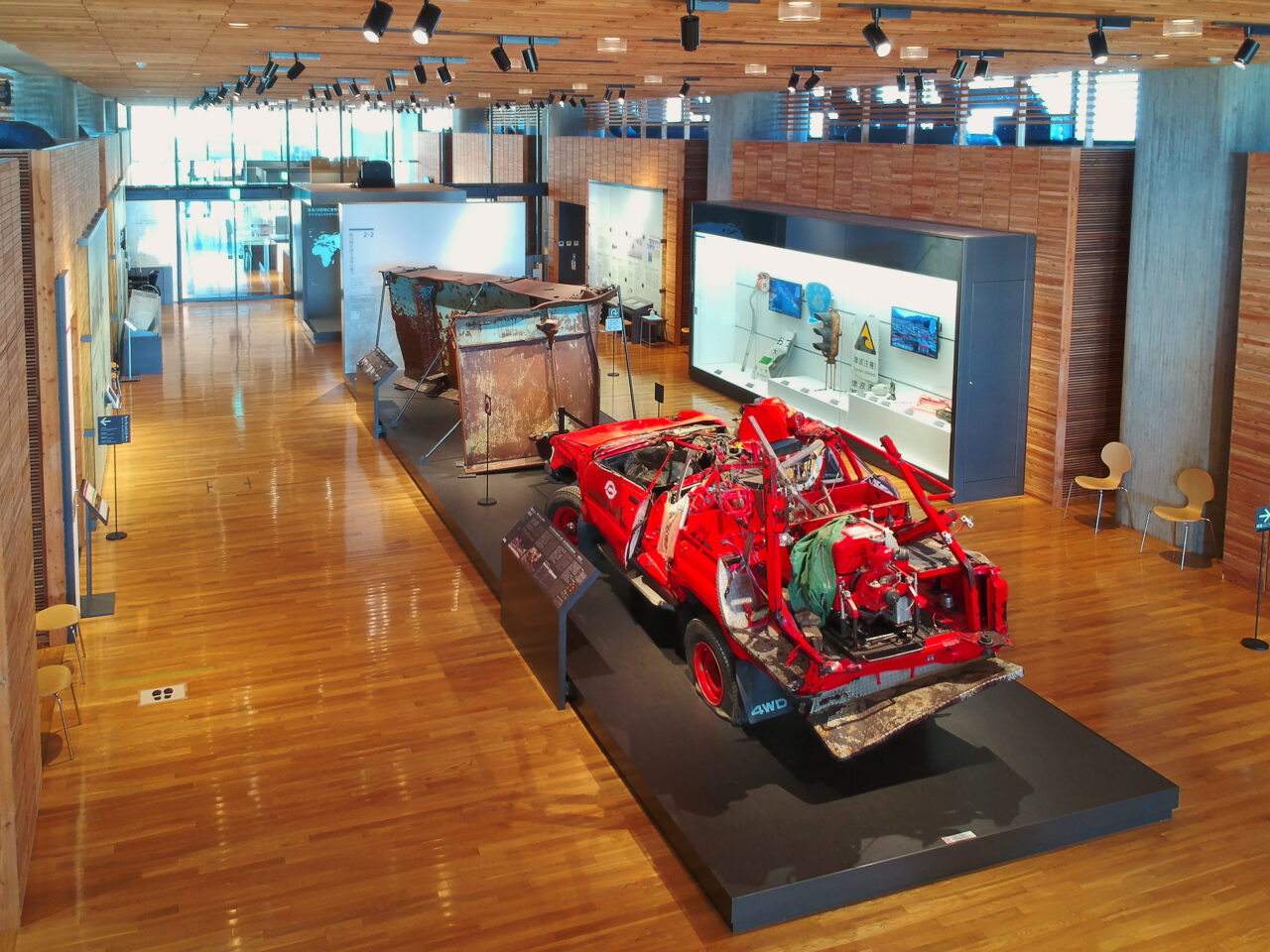
▲ Exhibitions in the museum
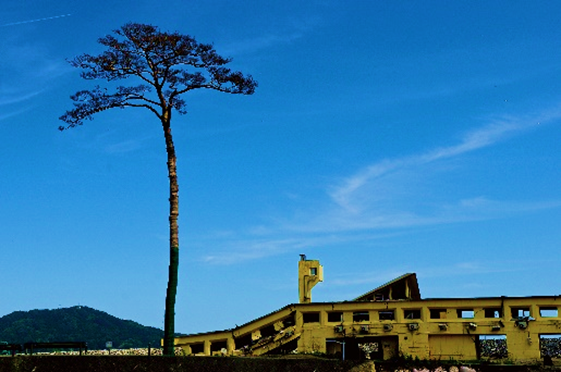
▲Symbol of the recovery, Miracle Lone Pine Tree
“To save lives and to live with the sea and the land”
In September 2019, the museum opened at the site in Takatamatsubara Memorial Park. It exhibits photographs, video clips, evidential documentations and many other articles to educate the public about the disaster using information based on the facts, in order to prevent tragedies associated with the Great East Japan Earthquake and Tsunami in the future. It also aims to show their appreciation for the support for recovery efforts. In the Park, there is “Michi No Eki Takatamatsubara (Roadside Station Takatamatsubara)” created as a retail attraction to revitalize the area. Also, the “Miracle Lone Pine Tree,” which miraculously survived the tsunami and later became the symbol of the recovery, is preserved here as a monument.
Iwate Tsunami Memorial Museum (Iwate TSUNAMI Memorial)
180 Aza Dotekage Kesen-cho Rikuzentakata-shi Iwate 029-2204
(Located in Takatamatsubara Memorial Park)
Phone|+81(0)192-47-4455
FAX|+81(0)192-47-4466
Closed: The year-end and New Year’s days and temporary closure days
Hours: 9:00 am – 5:00 pm (Last entry at 4:30 pm)
https://iwate-tsunami-memorial.jp/en/index.html
Kisekino Ipponmatsu (Miracle Pine Tree) Sta.

JR Ofunato Line BRT bound for Sakari
Dep.12:30
Arr. 13:15
Travel Time|45min
Ofunato Sta.(JR OfunatoBRT)

right in front(Approx. 1-min walk)
Ofunato Sta.(Iwate Prefecture Transportation )

Iwate Prefecture Transportation Morioka Line
Dep.13:22
Arr. 16:31
Travel Time|3hrs9min
Morioka Sta.
Morioka, a castle town, is famous for its historical buildings, cityscape, local specialties, and cultural activities including movies and theater, as well as the climate and hospitality that nurture them. The town is also famous for its three popular noodle dishes: Morioka cold noodles, Morioka jajamen (Zhajiangmian), and wanko-soba. The “Yoichi” street market, held every Saturday, is bustling with shoppers and tourists, and is also the host for many famous events.
Wanko Soba
Wanko soba, a culinary entertainment experience and a local specialty
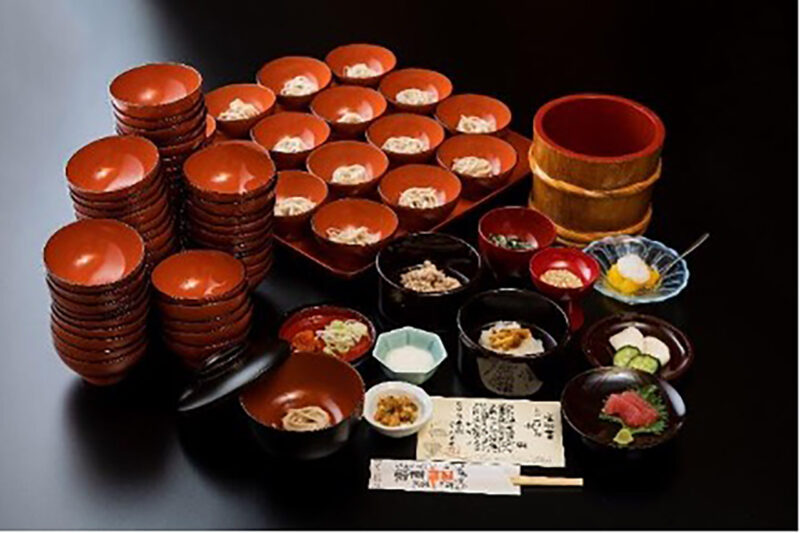
▲ A commemorative hand printed memento is given to those who finish 100 bowls of wanko soba at the Azumaya restaurant.
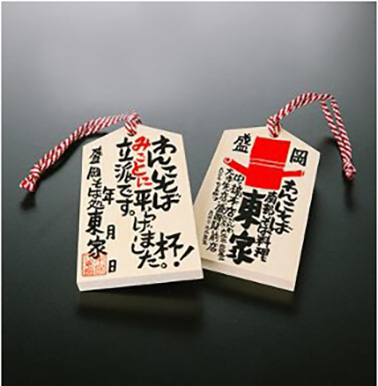
▲ A commemorative hand printed memento is given to those who finish 100 bowls of wanko soba at the Azumaya restaurant.
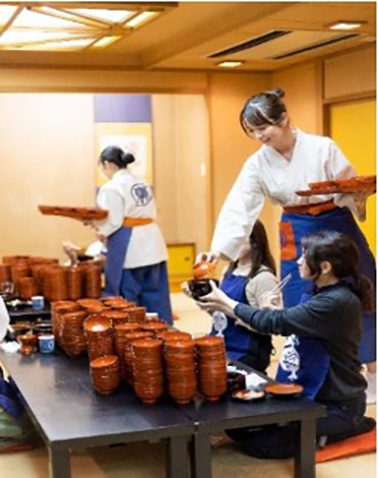
▲Waiters pour buckwheat noodles into bowls and encourage the customers to keep eating.
All-you-can-eat Soba (buckwheat) Noodles with a Personal Server
Wanko soba, which embodies the spirit of Iwate hospitality, is very popular among tourists. The exquisite smooth texture soba noodles are served in a broth, carefully prepared every morning by the master chefs. Your personal server on stand-by will be ready to fill your bowl with soba noodles at a brisk pace. If you finish more than 100 bowls of soba, you will receive a commemorative hand printed wooden memento. You can enjoy the culinary entertainment to the fullest.This would be a fun opportunity to see how many bowls you can get through!
*Approx. 15 bowls of wanko soba is equivalent to one bowl of kake soba (one main soba meal).
Of course, there are other dishes other than wanko soba that you can try, including soba dishes and soba course meal (require reservations), as well as Azumaya’s katsudon (pork cutlet bowl) being a very popular option.
Azumaya has three restaurants, including the Ekimae branch in front of the station.
Azumaya Ekimae Branch
8-11-2F Morioka Ekimae Dori, Moriokashi, Morioka
Phone|+81(0)19-622-2233
Opening Hours| 11:00–15:00, 17:00–20:00 (last order)
Closed on Mondays (Open all days during summer)
Morioka Cold Noodles
The perfect trinity of soup, noodles, and kimchi
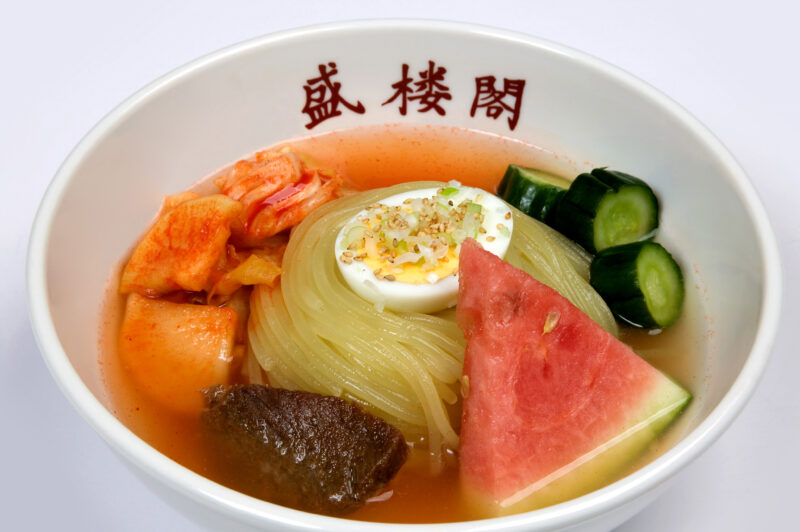
▲ Seirokaku’s signature dish, “Seirokaku Cold Noodle”
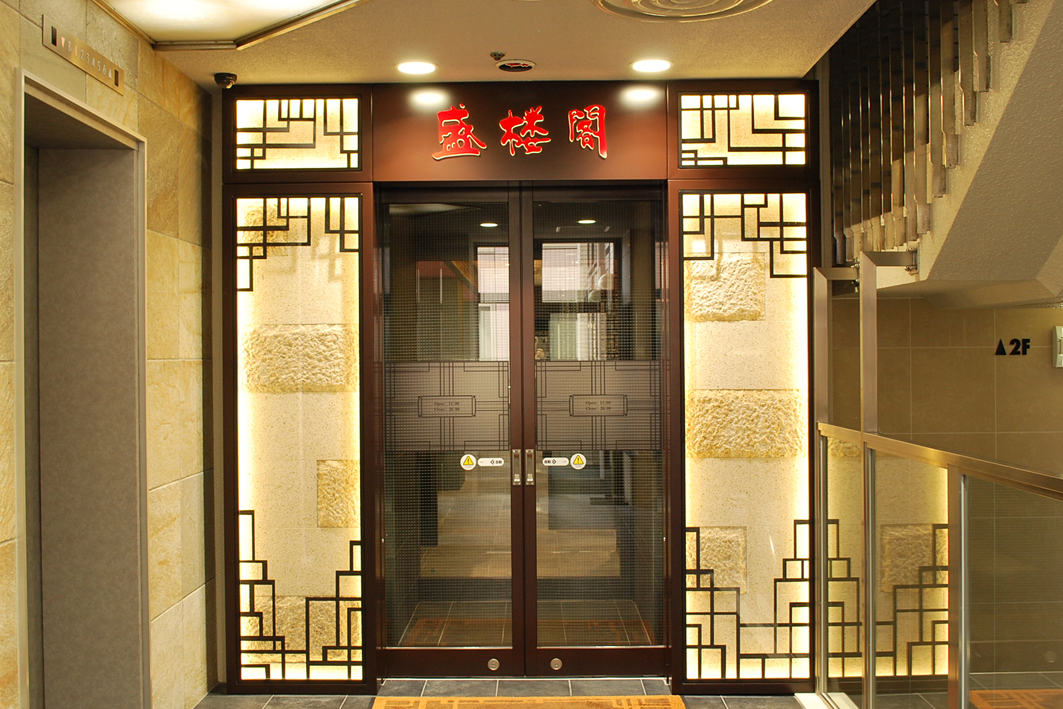
▲Entrance to Seirokaku restaurant
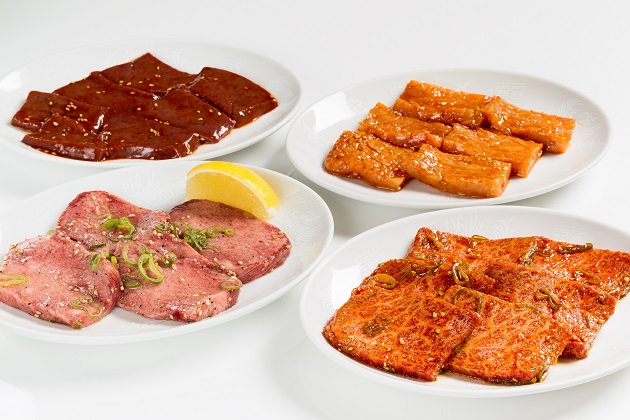
▲ Yakiniku Set Meal
An Authentic Yakiniku Restaurant Known for One of the Three Most Popular Noodles in Morioka, “Morioka Cold Noodles”
The restaurant’s signature “Seirokaku Cold Noodles” features a soup made with carefully selected ingredients including Japanese Wagyu beef, which is prepared slowly over a long process. The soup is light, yet has a deep flavor and sweetness. The homemade hand-kneaded noodles and kimchi are also a feature of this dish. Enjoy a bowl of the trinity carefully crafted. There are seven levels of spiciness to choose from, but we recommend the “separate spice” option, where the spicy ingredients come separately. This way, you can taste the original flavor of the soup and enjoy adjusting the spiciness to your liking. The restaurant is equipped with private rooms, so you can relax and enjoy your meal.
Seirokaku
2F, 15-5 Morioka Ekimae-dori, Moriokashi, Iwate
Phone|+81(0)19-654-8752
FAX|+81(0)19-653-1853
Opening Hours| 11:00–2:00. (Open all year round)
Morioka Jajamen
Try the secret miso paste at “Pairon”, an original Morioka jajamen restaurant, a key to its deliciousness!
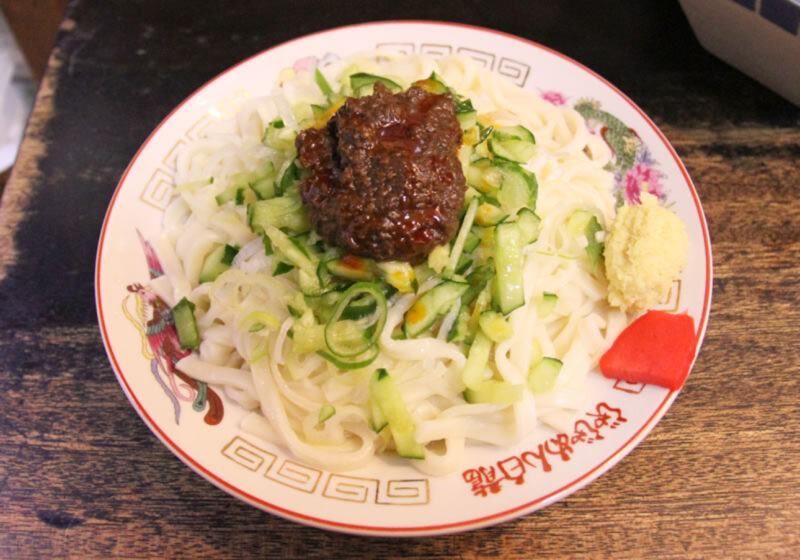
▲ original Morioka jajamen
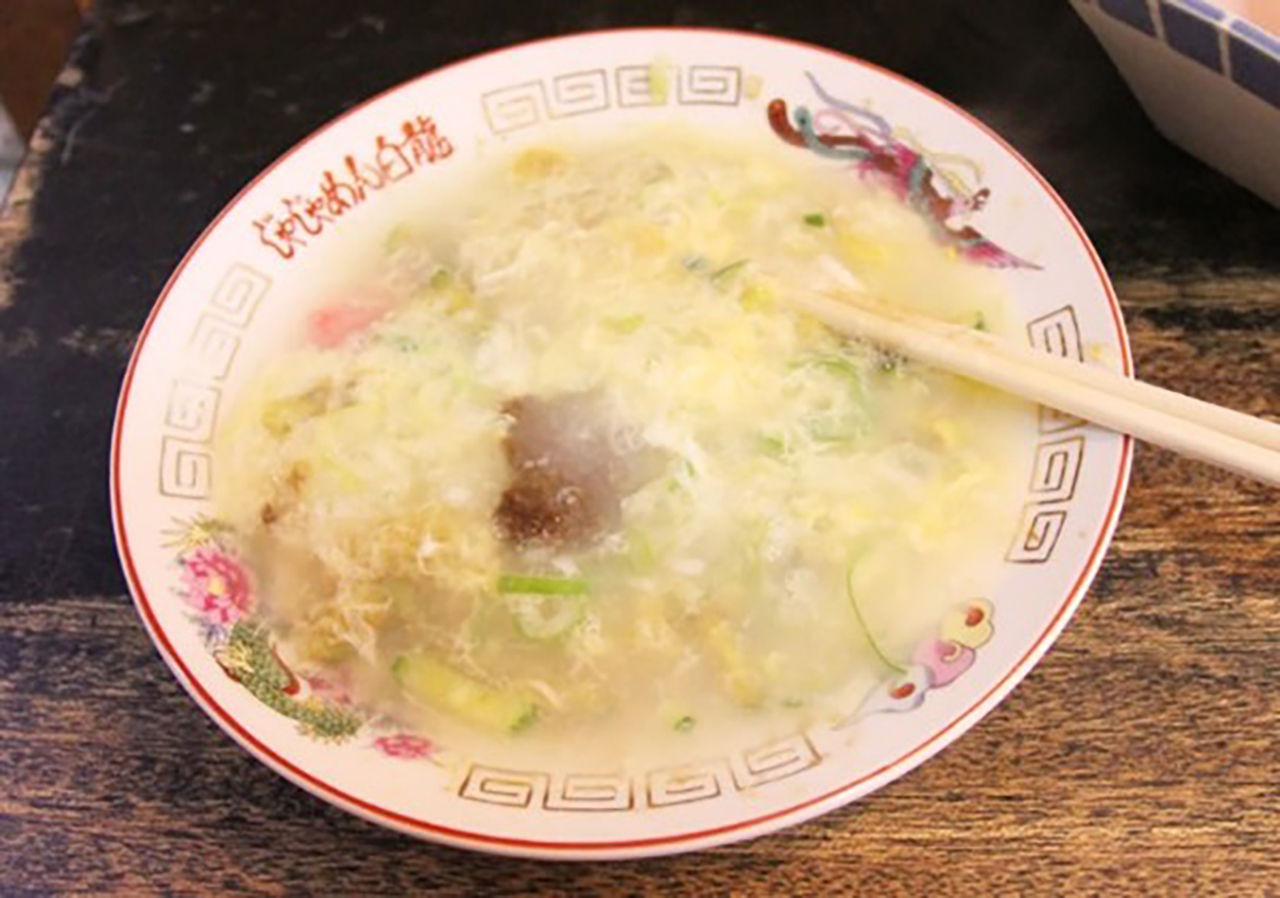
▲“chiitantan” (egg soup)
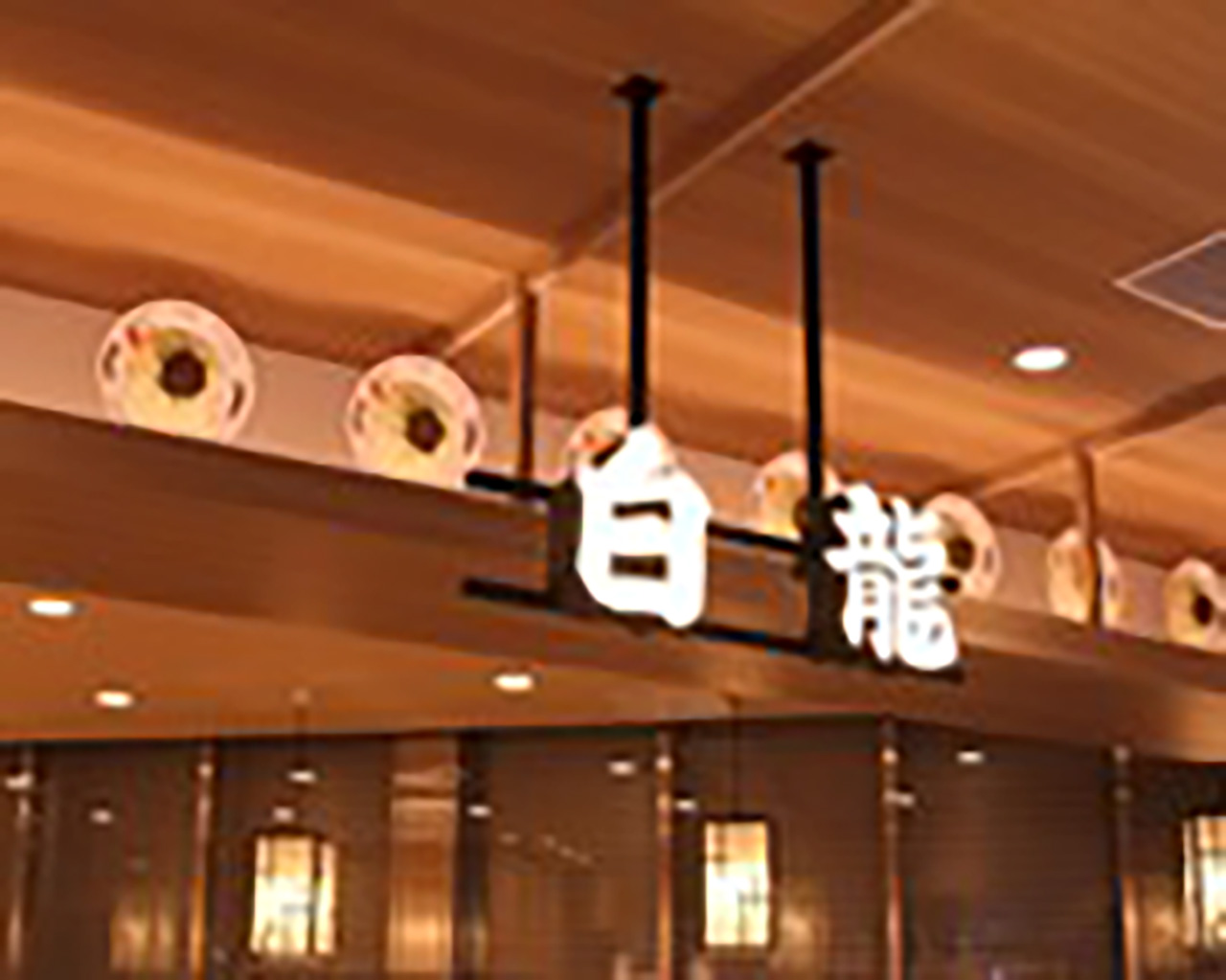
▲ Entrance
Adjust and Eat It to Your Liking! Finish off the Dish with “Chiitantan”
The dish features a secret miso paste, made by mixing and stir-fried ground meat, sesame seeds, shiitake mushrooms, and more than a dozen other ingredients with a miso base, which is combined with sticky, flat noodles. The unique flavor is unforgettable. Once you try it, you’ll want to come back again and again. The best way to enjoy the noodles is to add and mix raayu (Chinese red chili oil), vinegar, ginger, and garlic to your liking. Don’t forget to finish off your meal by making it a “chiitantan” (egg soup) and adding salt, pepper, raayu, miso for additional taste.
There are three branches of this store: the main branch, Fesan branch, and the Kawatoku branch.
Pairon Fesan Branch
1-44 Morioka Ekimae-dori, Moriokashi, Iwate,Japan Morioka Station Building Fesan, 1st floor, Odense-kan Phone|+81(0)19-623-5167 Closed days are irregular Opening hours| 11:00–21:30 (Last order 20:30)
Local Beer
Enjoy Baeren Draft Beer on Tap at the Brewery-Owned Beer Bar
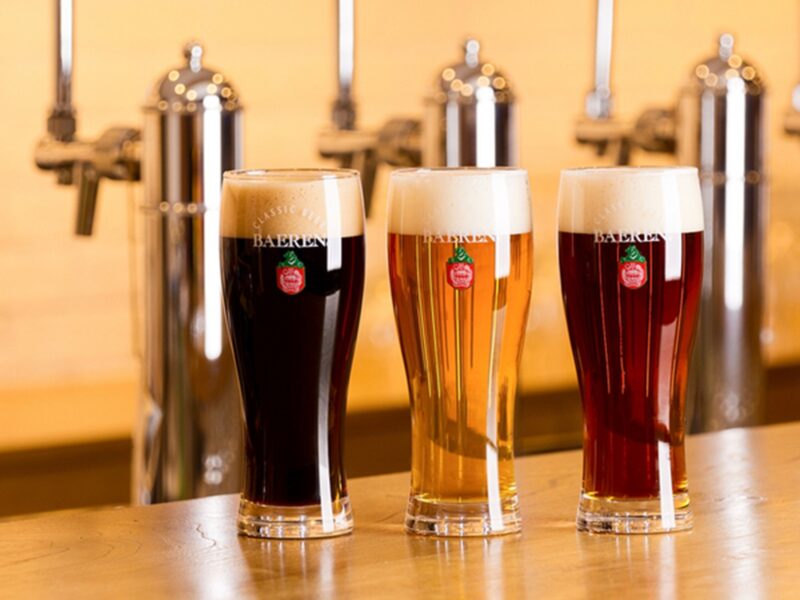
▲ Baeren Draft Beer
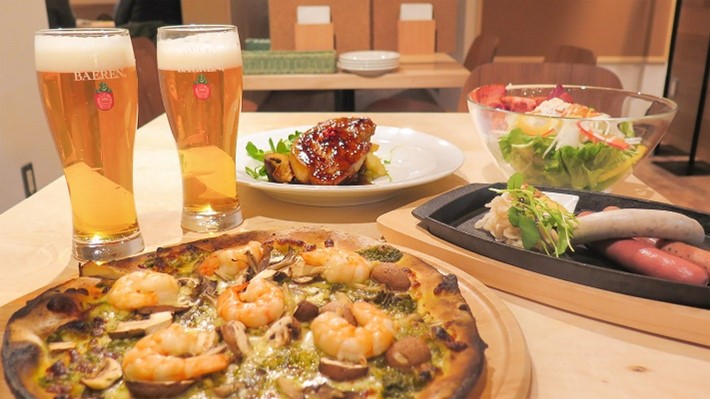
▲Pizza and special sausages that go well with the beers
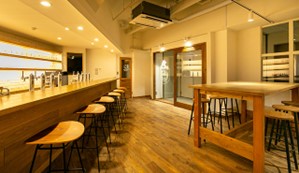
▲ Spacious restaurant area at the beer base
Come and Taste the Craft Beer at This Laid Back Restaurant, Served in Bottles with the Familiar Bear Symbol.
Beer Base Baeren Morioka Ekimae is a brewery-owned restaurant, which respects traditional European beer and is working to foster a beer culture rooted in the local Iwate area. The restaurant offers a wide variety of draft beers, including eight kinds of seasonal beers in addition to standard beers such as “Classic” and “Schwarz.” The restaurant also features dishes using local ingredients produced in Iwate Prefecture and freshly baked pizzas made in a dedicated pizza oven. The spacious counter seating makes it easy to stop by, even for first-timers or those wanting to enjoy a drink on their own.
Beer Base Bearen Morioka Ekimae
8-11 Morioka Ekimae-dori, Moriokashi, Iwate,020-0034
Phone&FAX|+81(0)19-601-7110
Opening Hours|
Weekdays 17:00–24:00
Sat. 15:00–24–00
Sun & Holidays 15:00–23:00
Closes at 23:00 on the last day of consecutive holidays
Open all year round (may be closed for New Year’s and company events)
Morioka Sta.

Tohoku Shinkansen ‘Hayabusa 44’
Dep.19:14
Arr. 21:23
Travel Time|2hrs9min
or
Tohoku Shinkansen ‘Hayabusa 46’
Dep.19:50
Arr. 22:04
Travel Time|2hrs14min
Tokyo Sta.
Areas
Artists
-
Unotori Kagura Preservation Society
The Unotori Kagura is a typical yamabushi (mountain hermit) kagura. It worships shishigashira into which the spirit from Unotori Shrine in Torii, Fudai village entered. It tours villages to pray for a rich haul, a bountiful crop and safety of family from January to March every year. The tour proceeds in Iwate, northbound to Kuji city and southbound to Kamaishi city in alternating years. Local residents host the kagura intimately calling “Unotori sama.” Since this form of the tour is unique and it maintains rare customs, Unotori Kagura is designated as the Intangible Folk Cultural Property by the state in 2015.
-
Sugenokubo Shishiodori/Kenbai
The Sugenokubo Shishiodori is a dance imitating wild deer’s vigorous motion with deer-shaped headdress.
In ancient time, when Takemikazuchi-no-mikoto landed on the shore of Lake Kasumigaura in Ibaraki prefecture and the native people attempted to kill him by setting fire to the field, numerous deer showed up, repeatedly plunged into the water and ran around to extinguish the fire. Deeply moved to see this, Mikoto created the shishiodori.
It is unique to the Sugenokubo school that shishiodori and kenbai are performed swiftly interchanging. The dance is impressive in its dynamism of dancing with the gilt on the deer horns which sparkles reflecting the fire.
It is designated as the Intangible Folk Cultural Property by Iwate prefecture in 1988. -
Ushifushi Nenbutsu Kenbai
In 1190, Chinzei Hachiro Tametomo’s third son, Minamoto no Tameyori, was granted his territory in Hei and Kesen by Minamoto no Yoritomo, the first shogun of the Kamakura shogunate. He built a castle in Nejo, Roki, and took on the name of Hei Yorimoto.
Yorimoto built Kegon-in temple in dedication to the soul of his father, where he had 27 soldiers dance for the souls of ancestors and of the Minamoto clan and also of its rival Taira clan killed in the war. This is believed to be the origin of the Ushifushi Kembai.
During the annual Bon Festival in August, the dancers go around houses in the area to appease the souls of ancestors and the recently departed. On the 16th, it ritually performs its kembai and nanatsu-odori (seven-item dance) at the Kegon-in temple in Kebaraichi to pray for the dead. -
Nanbuhan jyusyoin Nengyoji Daikagura
In 1688, when the shrine of Ozaki Daimyojin, the guardian deity of Kamaishi, was built, the Sano family, the official paymaster of the Nambu domain, donated a large hexagonal portable shrine in which the sacred body was enshrined, and received guidance from Morioka Shichikencho, the Nambu domain’s official bill administrator. They were then officially appointed as a nengyoji annual leader by Jushoin temple which, in charge of rituals for Takegawa Inari Shrine in Morioka, presides over ten regional nengyoji in the Nambu domain.
-
Otsuchi Toramai Kyogikai
The troupe was formed as toramai section in the association of the preservation societies of the folk performing arts in Otsuchi town in 1990. Comprised of four toramai groups in the town; Ando, Mukaigawara, Rikuchubenten and Otsuchi-Shiroyama, the troupe aims at cultivation of friendship between the groups, mutual empowerment and social contribution.
The great earthquake of March 2011 damaged all the four groups. Overcoming the loss of the fellow members, the costumes and other equipment, they reunited for the revival and transmission. They have been actively performing the dance nationwide since then, to show their gratitude for help and support they received. In their repertory are Yaguruma, Hanetora, Sasabami, Jinkuodori, and Teodori among others. -
Kita Shichifukujin
The Shichifukujin-mai of Kita represents the seven gods of good fortune, popular gods in folk belief named Daikokuten, Ebisu, Fukurokuju, Bishamonten, Jurojin, Benzaiten and Hotei. It is performed in festivals held to pray for good harvest and big catches in the sea, and also on occasions year-round to pray for prosperity and exorcism at such celebratory events as wedding parties, new home construction and the launchings of new sea vessels. It has been handed down by volunteers from Kita since the 1910’s, and performed for the annual festival of Kurosaki Shrine, including the O-Ise-sama (aka Daijingu-sama) Festival held once every four years. In recent years, the Shichifukujin-mai of Kita has been practiced as a folk art by local elementary and middle school children as well.
-
Gyozanryu Sasazaki Shishiodori Preservation Society
In 1768, a man named Risota returned home from Shizugawa village (today,Minamisanriku Town,Motoyoshi District,Miyagi Prefecture) in Motoyoshi district, bearing a scroll certifying him as the inheritor of this dance. He was later adopted by the Osorei family in Sasazaki, Ofunato, and introduced the dance to the district. The chief of the Date clan praised the dance and granted Risota the akakuyo (red nine-star) crest of a fief-holder, the epithet of “gyozan,” (which means “rare,” “extraordinary”) and the frontal cloth with bird feathers. This is the precious ancestral heritage.
Contact
■Contact
NPO Iwate Arts Support Center
3F Morioka Odori Bldg. 15-7 1-chome Minami Odori, Morioka, Iwat e 020-0874
TEL|+81(0)19-656-8145
FAX|+81(0)19-656-8146
MAIL|sanfes@iwate-arts.jp
Sanriku International Arts Festival 2022 REVIVE
– An FY 2022 Japan Cultural Expo Project Presented and Co-presented by Japan Arts Council and Agency for Cultural Affairs, Government of Japan

Organized by|Sanriku International Arts Committee, Japan Arts Council, and Agency for Cultural Affairs, Government of Japan
Co-organized by|Hachinohe City, Hashikami Town, Hirono Town, Kuji City, Noda Village, Fudai Village, Tanohata Village, Iwaizumi Town, Miyako City, Yamada Town, Otsuchi Town, Kamaishi City, Ofunato City, Rikuzentakata City, Sumita Town, Sanriku Railway Co., Ltd., Japan Folk Performing Arts Association, NPO Iwate Arts Support Center, and NPO Japan Contemporary Dance Network
Cooperated by|NPO Shinsai Regain, imajimu LLC, Tohoku Cultural Property Video Research Institute, Minna no Shirushi LLC